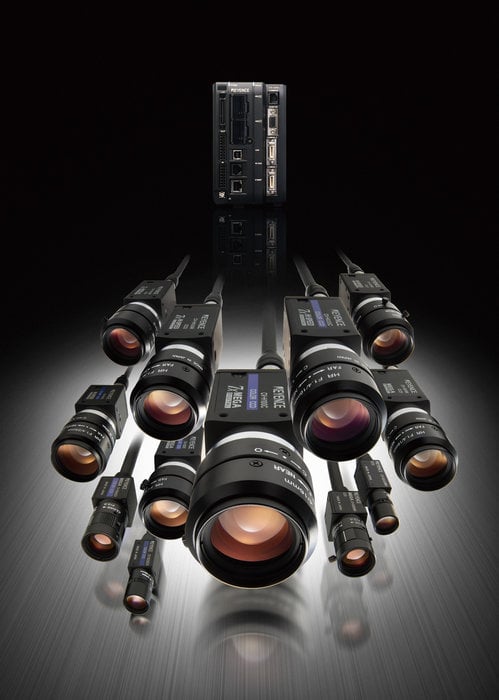www.magazine-industry-usa.com
11
'13
Written on Modified on
Immediate Detection of Defects for Gemalto.
Gemalto has improved productivity by using Keyence's CV-5000 vision system to inspect protective transparent resin overlays on its smart-card micromodules and quickly halt production if a defect is detected.

"At our Gemenos site in France we check that the protective resin overlay is correctly applied to our micromodules. More specifically, we check the dimensions, centring and cleanliness and whether the resin has been evenly applied without any overflow," explains Thierry Padovani, Coating and Assembly Engineer at Gemalto.
"Because the resin is reinforced with fibres, dispensing defects can be a regular occurrence. As a result, regular maintenance is a necessity. We wanted to be able to detect problems as quickly as possible in order to reduce the number of reject micromodules."
The Gemenos site turns out 12,000 modules per hour. As the smart cards are placed in 12 different positions, 12 modules are inspected at the same time. The observation distance is set at 50 cm. In the past, inspections were performed 3–4 metres after the resin dispensing station.
"We were looking for a stable solution that could quickly perform this fine detection despite the high production rate and have an alarm go off below 500 positions. The vision system is connected to the machine's control system and it does its job perfectly. It has enabled us to achieve significant productivity gains. Keyence's cameras are installed on six lines and there are plans to add a seventh one soon. The cameras have been operating 24/7 for three years now and we're completely satisfied with their detection stability," says Mr Padovani.
The detection process is made more complicated by the fact that the resin used is transparent. "We quickly solved that problem by adding special lighting to reveal differences in opacity," explains Mr Padovani. "The images captured are processed in black and white with a resolution of 1.2 megapixels. It was very quick to set up and use. Keyence developed a validation module that worked immediately and has been running fine since."
The CV-5000 vision system handles all colour, b&w, single-camera and multi-camera applications in record time, all for the benefit of increased detection stability. Its applications are dimensional measurement, positioning confirmation and visual inspection. The CV-5000 is the most powerful self-contained vision system on the market. For example, it allows 1 million pixels to be processed in 20.5 ms. This processing power also makes it possible to perform multiple inspections and further enhance the reliability of in-process inspections thanks to its unparalleled repeatability (seven times higher than that of current standards) and many image-processing tasks that optimise inspection accuracy.
CV-5000 Series models are controlled by a high-speed colour image processing engine and a high-speed RISC (Reduced Instruction Set Computer) CPU. Both are supplemented by two DSPs (Digital Signal Processors) designed specifically for image processing.
All CV-5000 Series models use these four processors to achieve parallel processing and attain the fastest processing speed possible – twice that of the leading models available on the market. The system is also equipped with a double-buffer memory that allows it to accept the next trigger input while an image is being processed. This enables an inspection tact time of about 16 ms (about 3,700 parts per minute) even in non-interlaced reading mode. The CV-5000 Series offers maximum connectivity through control I/O, Ethernet, USB and RS232 ports. This system can be interfaced with PLCs or a PC.




